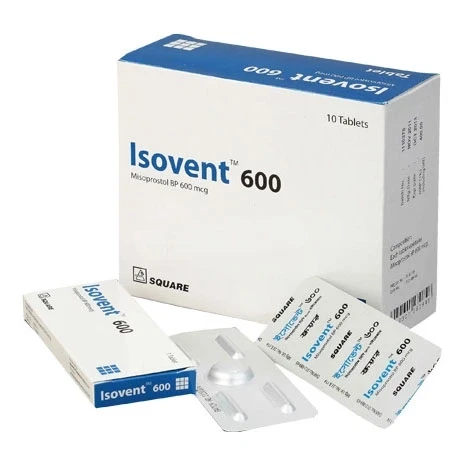

Xflam Tablet, Dexibuprofen 400 mg
Inhouse product
-
৳11.40
৳12.00 -
৳42.75
৳45.00 -
৳16.63
৳17.50 -
৳2.14
৳2.25
Reviews & Ratings
Indications
Xflam is indicated in-
- The relief of sign and symptoms
of osteoarthritis.
- Indicated in rheumatoidal
disorders such as osseous rheumatism, ankylosing spondilitis, juvenile
arthritis, muscular rheumatism, degenerative joint diseases.
- Acute symptomatic treatment of
painful menstruation (primary dysmenorrhoea)
- Common headache and fever
- Symptomatic treatment of mild
to moderate pain, such as muscle pain, headache and dental pain
- As an adjuvant with common cold
and influenza associated with headache.
* রেজিস্টার্ড চিকিৎসকের পরামর্শ মোতাবেক ঔষধ সেবন করুন'
Pharmacology
Dexibuprofen (S
(+)-ibuprofen) is considered as the pharmacologically active enantiomer of
racemic ibuprofen. Like racemic ibuprofen, Dexibuprofen is a non-steroidal
anti-inflammatory drug with analgesic action. Like ibuprofen, Dexibuprofen acts
by inhibiting prostaglandin synthesis.
Pharmacokinetics: Dexibuprofen is absorbed primarily from the small intestine.
After metabolic transformation in the liver (hydroxylation, carboxylation) the
pharmacologically inactive metabolites are completely excreted, mainly by the
kidneys (90%), but also in the bile. The elimination half-life is 1.8-3.5
hours; the plasma protein binding is about 99%. Maximum plasma levels are
reached about 2 hours after oral administration. The administration of
dexibuprofen with a meal delays the time to reach maximum concentrations (from
2.1 hours after fasting conditions to 2.8 hours after non-fasting conditions)
and decreases the maximum plasma concentrations (from 20.6 to 18.1 mcg/ml,
which is of no clinical relevance), but has no effect on the extent of
absorption.
Dosage &
Administration
The dosage must be
adjusted to the seriousness of the syndrome and the complaints of the patient.
During chronic pain, the dosage must be adapted to the lowest effective dose.
The recommended dosage: 600-900 mg Dexibuprofen per day, at 2-3
divided doses. The dosage can be raised temporarily up to 1200 mg Dexibuprofen
per day in patients with acute disorders or exacerbations. The maximum daily
dose is 1200 mg.
At dysmenorrhea: A dosage of 600 up to 900 mg
Dexibuprofen per day, at a divided dose.
* রেজিস্টার্ড চিকিৎসকের পরামর্শ মোতাবেক ঔষধ সেবন করুন'
Interaction
The reported drug
interactions of Xflam are similar to that of racemic mixture of ibuprofen. Drug
interactions is noticed with simultaneous use of anticoagulant, hydantoine and
sulfonamide, ticlopidine, lithium, other NSAID's, ACE inhibitors, beta
blockers, cyclosporine, tacrolimus, corticosteroids, digoxin, methotrexate,
pentoxyfiline, phenytoine, probenecid, sulfinpyrazon, sulfonylurea, thiazide
and thiazide type diuretics, and zidovudine.
Contraindications
Dexibuprofen is
contraindicated in patients with previous history of hypersensitivity to
Dexibuprofen, or another NSAID, or any other component of the product. Patients,
who experience attack of asthma, arouse bronchospasm, acute rhinitis, urticaria
or edema after use of similar drugs (e.g. aspirin or other NSAID's). It is also
contraindicated in patients with active or suspected hemorrhage, Crohn's
disease or ulcerative colitis, patients with serious heart diseases, kidney
function impairment (GFR <30ml/min), and liver function impairment.
Side Effects
Clinical experience
has shown that adverse effects of Xflam are similar to those of racemic
ibuprofen. Common side-effects are dyspepsia, diarrhea, fatigue, and headache,
nausea, vomiting, abdominal pain, hypersensitivity reactions - bleeding, ulcer.
Pregnancy &
Lactation
Pregnancy: Although no teratogennic impact has been
observed in the animal-experimental research with dexibuprofen or ibuprofen,
the use should be avoided during the pregnancy. However, animal reproduction
studies are not always predictive of human response. Because of the known
effects of nonsteroidal anti-inflammatory drugs on the fetal cardiovascular
system (closure of ductus arteriosus), use during late pregnancy should be
avoided.
Lactation: Studies at people have shown that racimic
ibuprofen proceed in small to negligible degree in mother milk. So,
Dexibuprofen should be used with cautions in nursing mothers.
Precautions &
Warnings
Xflam should be used
with particular caution in patients with bronchial asthma or other chronic
diseases of the pulmonary tract as well as in persons prone to allergy. The
drug should be used in patients with hepatic, renal or cardiac insufficiency
and with hypertension not responding to any treatment. Consultation with a
doctor is recommended for patients with systemic lupus or with other
autoimmunological disease before beginning therapy using the drug. Xflam should
be used with extreme cautions in active and suspected hemorrhagic conditions
such as gastro-duodenal ulcers, ulcerative colitis, Crohn's disease,
alcoholism. Allergic reactions to the drug may appear even for the first-time
user and in such case, it should immediately be stopped.
Use in Special
Populations
Hepatic impairment: Patients with mild to moderate liver
function impairments must start with low amounts, and must closely be
monitored. Xflam should not be used in patients with serious liver function
impairments.
Renal impairment: The start amount must be reduced at patients
with mild to moderate kidney function impairments. Xflam cannot be used
patients with serious kidney function impairments.
Children Dose: Although Xflam is not licensed for use in
children under 18 years of age in the UK, some countries permit such use. For
example, in Switzerland, Xflam has been given to children aged 6 years and over
at a dose of 10 to 15 mg/kg daily in 2-4 divided doses.
For elderly people: Lowest effective dose is recommended. The
dosage can be raised to adult dosage if well tolerated.
Overdose Effects
Xflam has low acute
toxicities. Symptoms of toxicity occur at doses between 80 and 100 mg/kg body
weight. Mild symptoms are abdominal pain, nausea, vomiting, lethargy, headache,
tinnitus and ataxia. Moderate to serious symptoms, such as flatulence,
hypotension, hypothermia, metabolic acidosis, reduced kidney function, coma,
and apnoea. The treatment must be symptomatic: there is no specific antidote.
In case of large quantities of Xflam, activated charcoal should be
administered. Vomiting can be induced only when life-threatening quantities of
the substance ingested and the procedure can be carried out within 60 minutes
after ingestion. Dialysis and hemodialysis are of little value as Xflam binds
strongly to plasma protein.
Therapeutic Class
Drugs for
Osteoarthritis, Drugs used for Rheumatoid Arthritis, Non-steroidal
Anti-inflammatory Drugs (NSAIDs)
Storage Conditions
Do not store above
30°C. Keep away from light and out of the reach of children
Frequently Bought Products
Isovent Tablet, Misoprostol 600 mcg
Adsalt Tablet, Sodium Chloride 300 mg
Nomi Tablet, Zolmitriptan 2.5 mg
Hemorist Syrup 200 ml bottle, Abhayarista
Acme's Dextrose DS IV Infusion 10ml bag, Dextrose 10%
Product Queries (0)
Login Or Registerto submit your questions to seller
Other Questions
No none asked to seller yet
-
৳11.40
৳12.00 -
৳42.75
৳45.00 -
৳16.63
৳17.50 -
৳2.14
৳2.25

















